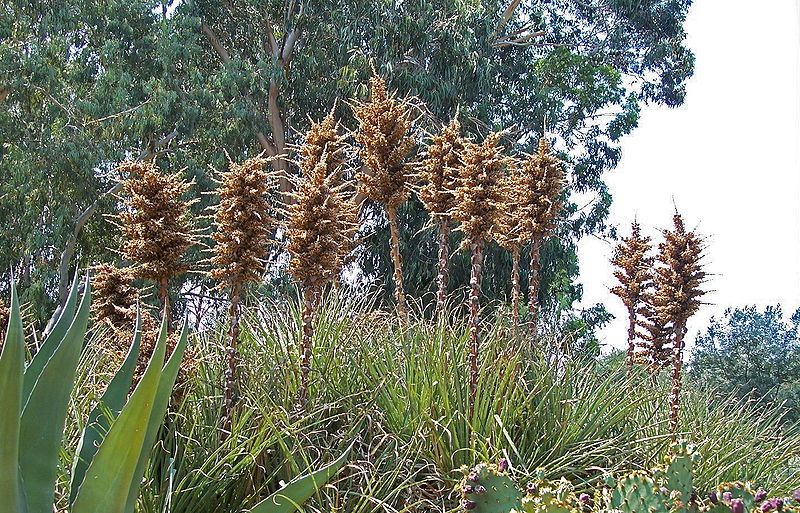Sheep-Eating Plant Blooms After 15 Years In UK Greenhouse; Are Humans In Danger? [PHOTOS]
Plants are often innocuous living beings that provide us with food, hobbies, and decorations for our homes. However, a plant known to "eat" sheep could potentially be dangerous, especially if it's now growing outside of its native deserts of Chile.
The "sheep-eating plant," Puya chilensis, has finally bloomed at the Royal Horticultural Society's Garden in Wisley. The plant has grown at the garden for 15 years and has reached a height of about 10 feet before the appearance of its first flower.
This is the first time it has bloomed and survived on liquid fertilizers, as opposed to its preferred meals of sheep.
How on Earth can a plant eat an animal?
The concept is not completely unheard of. Charles Darwin wrote a book in 1875, entitled Insectivorous Plants, on plants that actually ate insects. Darwin's effort identified six of these plants, though now there are over 650 different types presently known.
Venus fly traps lure insects into their clutches with sweet nectar before snapping shut and devouring them. Similarly, sundews can live up to 50 years, subsisting on insects that land on its sticky and mobile tentacle-like structures.
Plants that eat insects or animals often cannot perform photosynthesis — the usual process by which other plants make their own food — though eating insects does not seem like much of a disadvantage, as some plants can live for years on only insects.
The Puya chilensis is equipped with foliage that sheep find enticing, as well as spikes and hook shaped spines. The spikes and spines latch onto the sheep and trap it as it tries to eat the plant's foliage. The sheep will often starve or dehydrate to death. The plant subsists on the sheep's decaying body, which acts as a fertilizer for the plant.
The plant at the UK garden poses very little threat to visitors that may find it interesting. It has been growing in a dry part of the garden's greenhouse, well out of reach of any sheep.
































